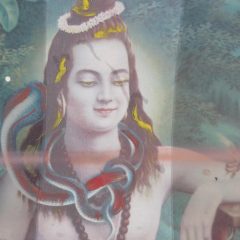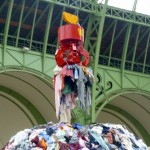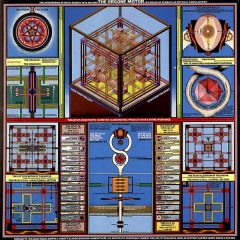[Matthew visits the spring art fair, Art Paris, and talks about the infusion of Chinese art there. — the artblog editors]
Even the casual Paris observer will note that the Elysian Fields (Les Champs Elysées) have slowly become a bit more Chinese over the last two decades. Sushi restaurants are run by Chinese immigrants; old French “tabacs” and cafés are being taken over by Chinese and Vietnamese families. Chinese is almost a second language in the Louvre and my friends’ children all learn Mandarin at school. So it’s no wonder Art Paris, the spring salon that takes place each spring, made China the guest of honor at its wall-to-wall mall of 140 galleries at the always-gorgeous Grand Palais.
An impressive showing of Chinese artists
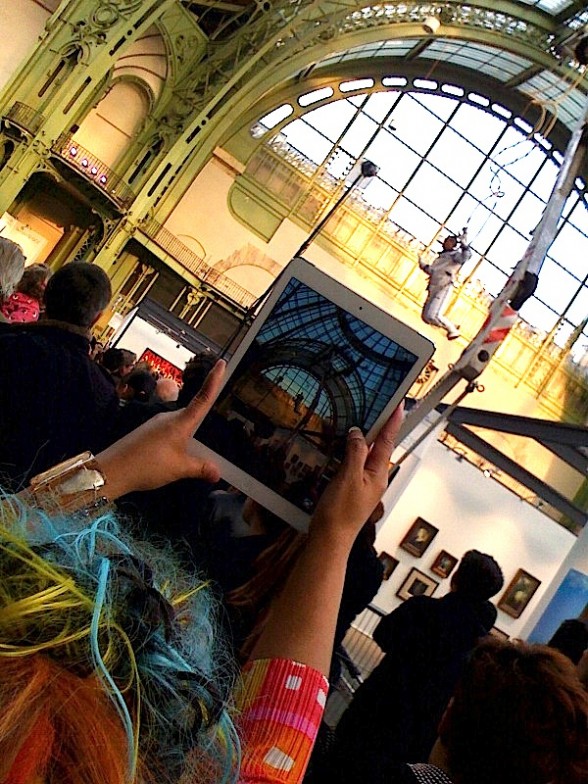
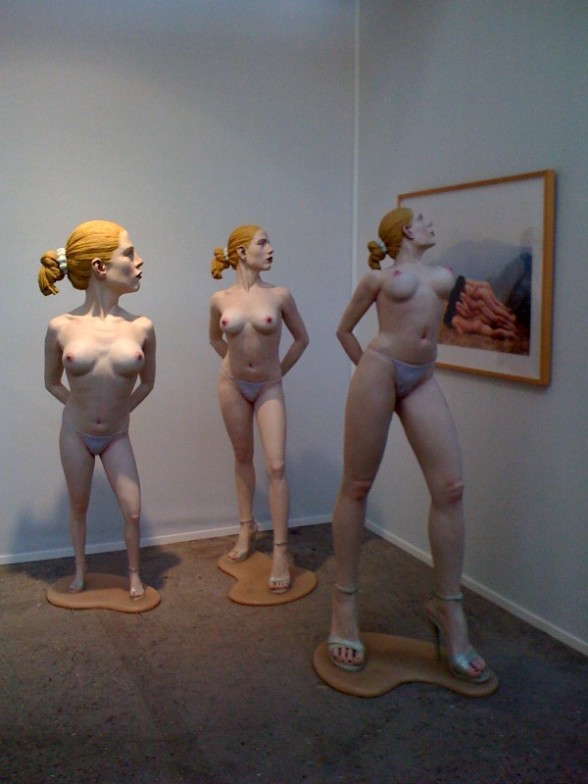
Chinese artists cropped up like dandelions, but a viewing space was set up to celebrate some of the better-known names–although there was no sign of broken vases by celebrated outcast/insider Ai Weiwei. The group exhibition featured comic resin sculptures of what appeared to be three muses: “Femme, femme, Femm, Fem, fe” (2006), each with her own specially-sized head by star Wang Du. They were curious, because the women were not overtly Asian, but extremely well-made. Whatever you might feel about the Chinese wave–too cartoony, politically shy or courageous, or even too colorful or clever– its quality is felt through its great attention to detail and a clarity one doesn’t find in Europe. And typically, the works involve figures. Perhaps it’s part of the DNA from the days of Mao and socialist realism? Or the mindblowing and innate ability to copy from the world? (Download the Art Paris PR information on the Chinese artists here: Art Paris China; or view the all the artworks here: Art Paris 2014.)
From tongue-in-cheek to just plain cheeky
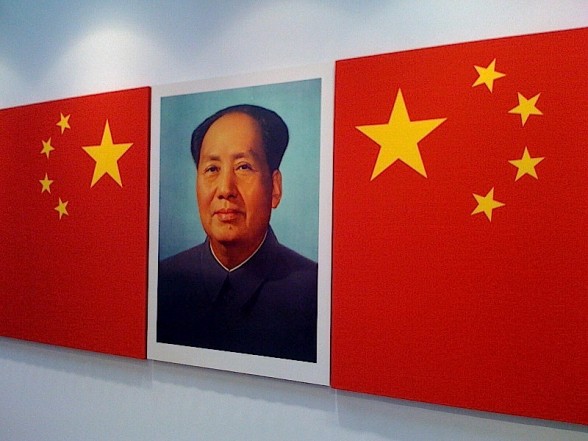
Big-name French galleries like Daniel Templon chimed in and showed the terribly gleeful canvases of Yue Minjun (“Free Sky n°1,” oil on canvas, 100 x 90 cm, 2012), an artist who recently enjoyed a retrospective here at the Fondation Cartier. French star Jean-Pierre Raynaud weighed in with a 2001 work at Galerie Caroline Smulders–“Flag on a Frame,” featuring a Communist-era portrait of Mao bracketed by a pair of Chinese flags. I wonder what Chinese President Xi Jinping said when he saw this piece while visiting the fair on opening night. I’m sure I’m not the only one who pondered the notion.
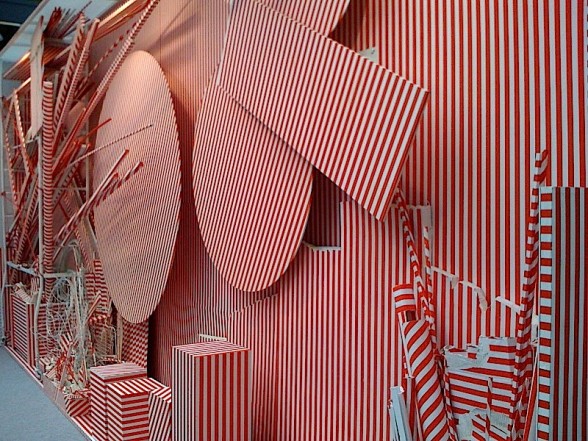
Art Paris offered a full art-world buffet, with many works standing out due to their large-scale installations, like Manuel Merida’s “Usuyuki/Chantier II” wall-sized, 11-meter installation. It looked–and moved–like a perpetual peppermint candy-making machine. Galerie J.P. Ritsch-Fisch showed the 1989 six-meter drawing by British outsider artist Chris Hipkiss. The work, a haunting and obsessed apocalyptic vision in pencil, is destined for a French museum, according to the Strasbourg dealer.
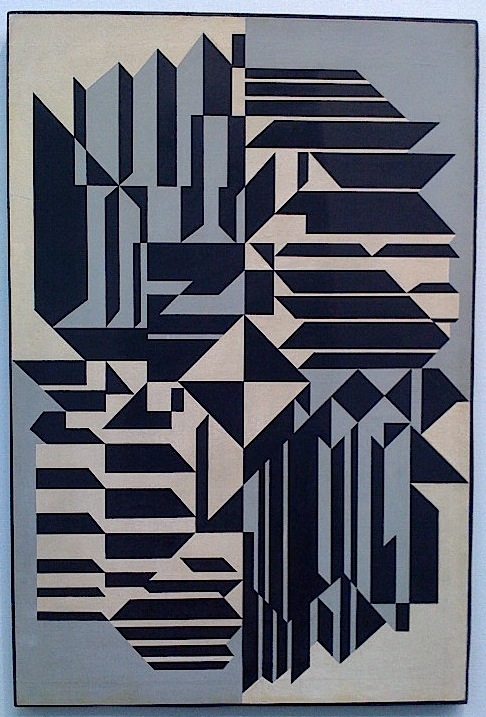
I had to stop by one booth showing classic late 1950s geometric canvases and drawings. The Hungarian-born Victor Vaserely (1906-1997) was the granddad of Op Art, and his 1959 canvas “Geminorium” is a perfect example of that slice of history, on view at the Paris-based Gimpel Muller. And if you mistook Vera Molnar’s 1955 gouache “lent mouvement sur fond blue, orange, rouge et noir” (slow movement in blue, orange, red and black), for a Damien Hirst, well, that’s good news. The dot grid was not cooked up in London in the 21st century.
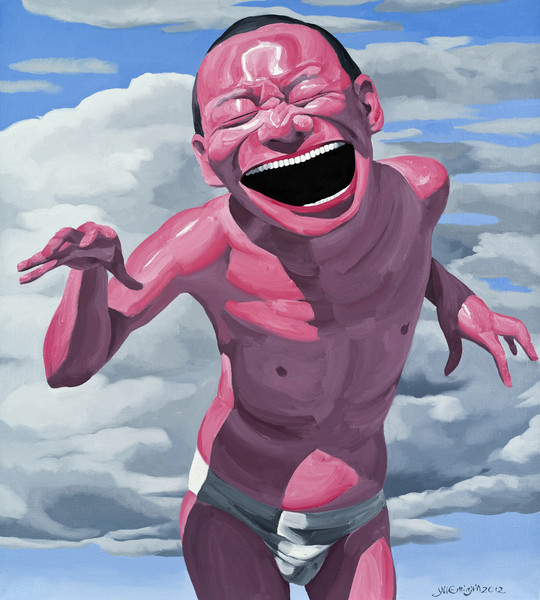
What it is to be human
As with most art fairs, there were dozens of works that wanted to shock, and they did–some with a good sense of humor regarding the human condition, like Bernardi Roig’s “Practices to suck the light (hanging),” 2012, from Mario Mauroner Contemporary Art, Salzburg/Vienna. We all try so hard, don’t we, to lift ourselves up beyond our own condition? And the results are often depressing–funny but depressing.
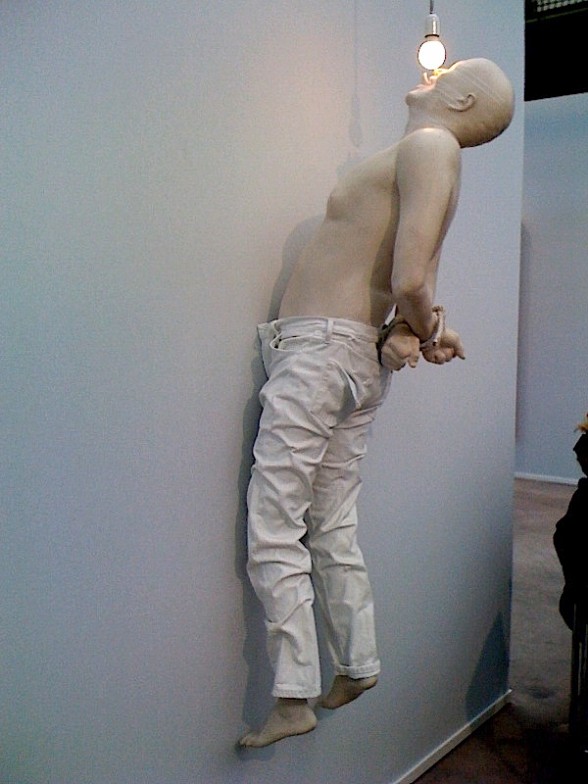
And in the same spirit, there was Chinese artist Li Wei’s own attempt to fly. Sporting a space suit, the artist was lifted aloft via a handsome crane so that he could hover above a crowd of about 200. The artist obsesses about flying, and his photographs of feet and people in the air have long been a huge hit. As he was wavering about aloft, I wondered if this were his first time in the in the air himself–if not his first time in Paris. One observer said, “Well, sure, it’s not the moon, but the Grand Palais is not so bad.”
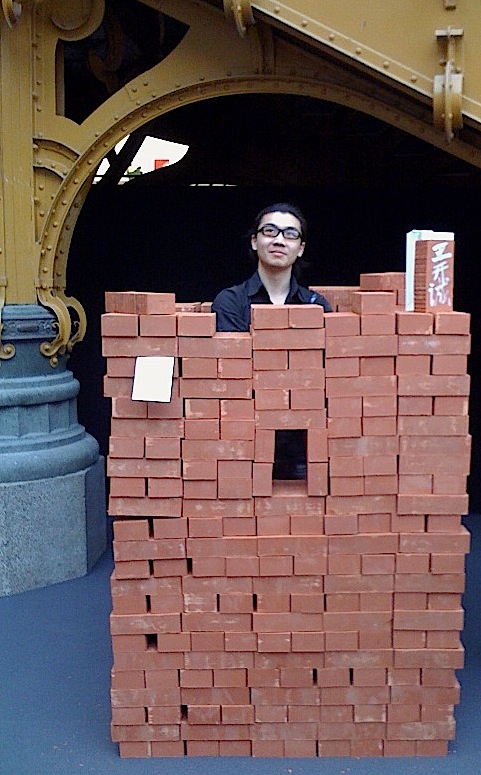
On my way out, I ran across this young Beijing-based artist in a Kafkaesque “castle” of 1,000 bricks. Wang Kai Cheng used a Chinese design for 1000 red bricks, had them made in France and shipped to the Grand Palais, and then quickly walled himself in. “One of us can be free” offered visitors the chance to free him for 10 euros a brick, each of which the artist signed and numbered–and bagged! I liked the idea of paying cash for Communist art and the idea of freeing him–in Paris!–so I bought one (number 98) and dutifully lugged it home to put next to my half-dozen plants. Let freedom grow!
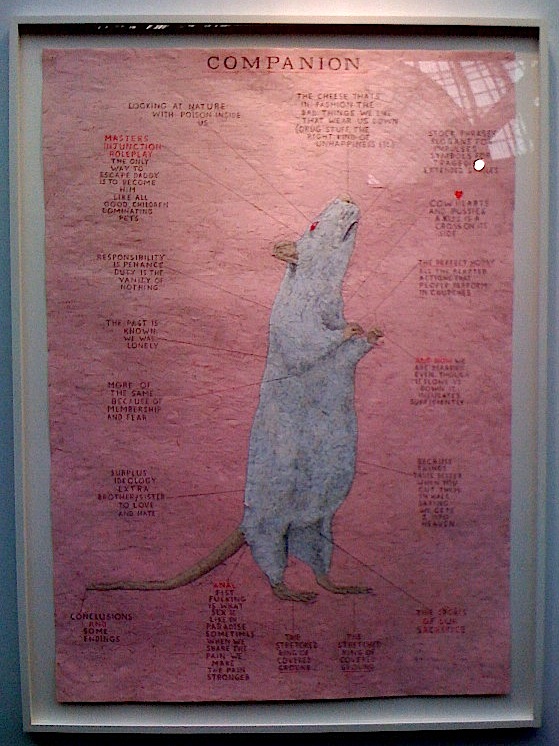
A final note: As I sat down to write up my notes, I came across this headline on the computer interwebs–“China’s Secret Tiger Meat Trade”. Why am I not surprised that there is currently a scandal in China, and now the world, centering around an “illegal tiger-eating dinner club for wealthy businessmen in Guangdong province”? The report said that, while forbidden, the practice is popular among China’s ruling class, “who enjoy watching the animals die before dining on them.” Art world metaphor?



